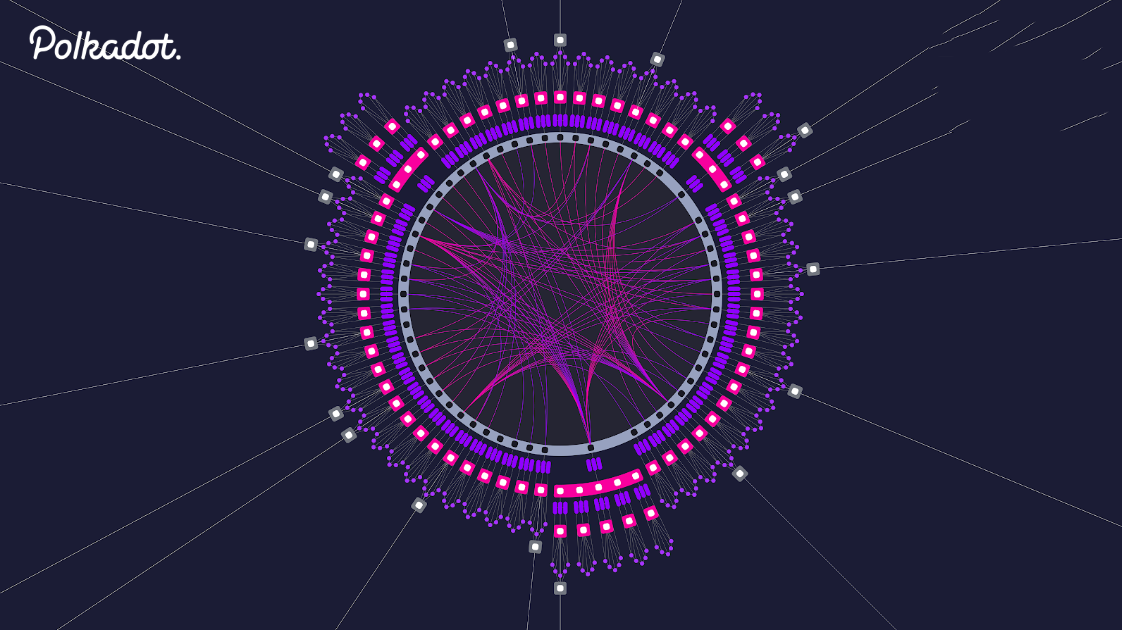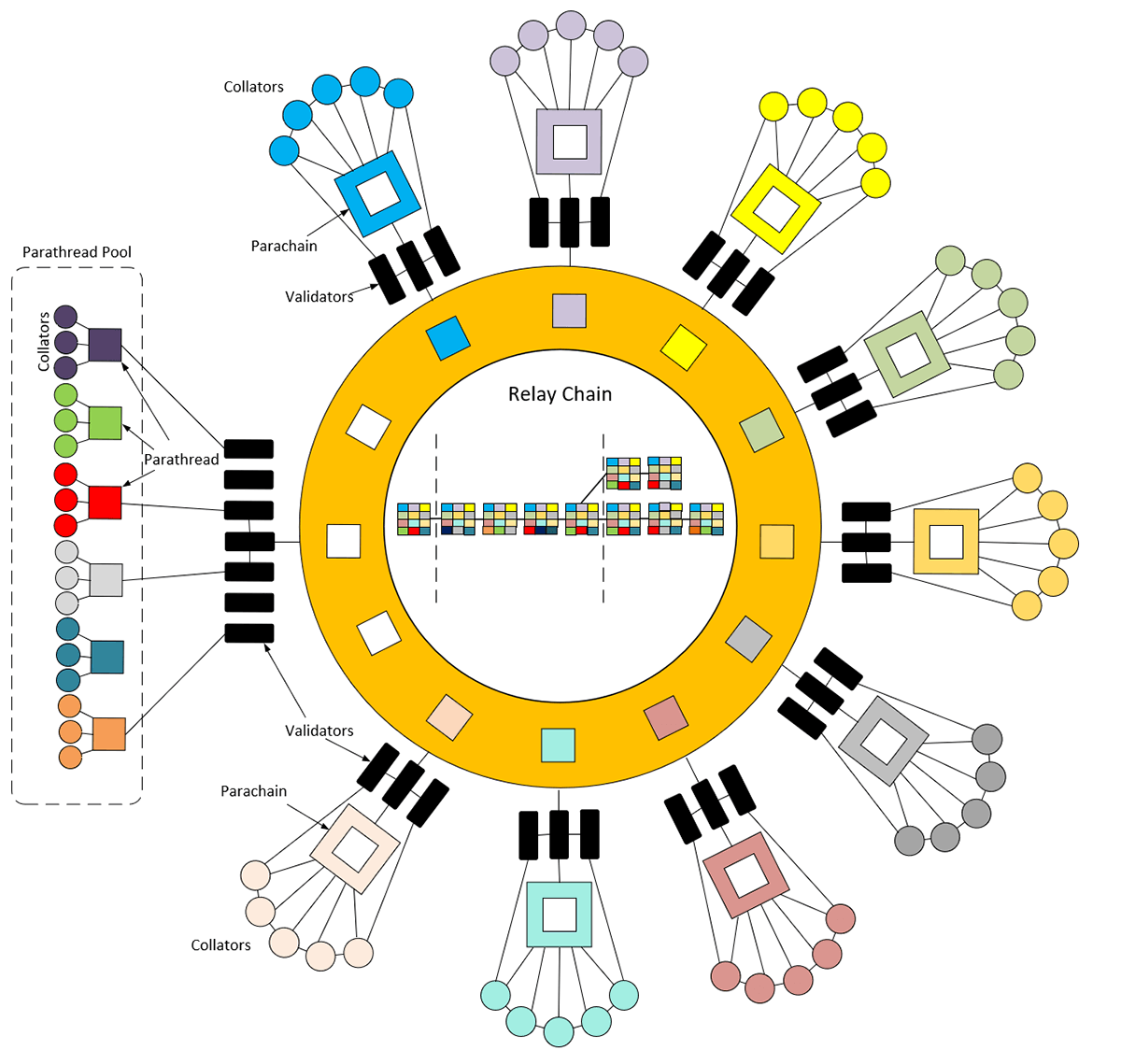Deep Review of Polkadot Blockchain Network
Introduction
Polkadot is a next-generation blockchain protocol that enables different blockchains to transfer messages and value in a trust-free fashion. Developed by the Web3 Foundation, Polkadot aims to create a decentralized web where users are in control of their data and assets.
Key Features
- Multi-Chain Architecture: Polkadot is built on a multi-chain architecture that allows multiple blockchains to operate in parallel, connected by the main relay chain.
- Interoperability: Different blockchains within the Polkadot ecosystem can communicate and share data, enabling seamless interaction between them.
- Shared Security: By connecting to the main relay chain, parachains (individual blockchains) benefit from the security of the entire network, enhancing overall security.
- Governance: Polkadot has a sophisticated governance system that allows token holders to participate in decision-making processes, such as protocol upgrades and parameter changes.
- Scalability: The multi-chain architecture of Polkadot helps in improving scalability by processing transactions in parallel across multiple chains.

Technology
- Substrate: Polkadot is built using Substrate, a framework for building custom blockchains. Substrate provides developers with the tools to create their own parachains on the Polkadot network.
- Proof of Stake: Polkadot uses a proof-of-stake consensus mechanism to secure the network and validate transactions. Validators are selected based on their stake in the network.
- Cross-Chain Messaging: Polkadot's XCMP (Cross-Chain Message Passing) protocol enables secure communication between parachains, allowing them to exchange messages and value.
- Parachains: These are individual blockchains that connect to the Polkadot network and benefit from its security and interoperability features.
- Bridges: Polkadot can also connect to external blockchains through bridges, enabling cross-chain communication with other networks like Ethereum.

Use Cases
- Decentralized Finance (DeFi): Polkadot's interoperability and scalability make it well-suited for DeFi applications, allowing for seamless interaction between different financial services.
- Supply Chain Management: The ability to connect multiple blockchains can streamline supply chain processes, enhancing transparency and traceability.
- Identity Management: Polkadot's governance features can be leveraged for secure and decentralized identity management solutions.
- Internet of Things (IoT): With its scalability and shared security model, Polkadot can support IoT applications by ensuring data integrity and secure communication.

Benefits of Polkadot
- Interoperability: Polkadot allows different blockchains to connect and communicate with each other, enabling seamless transfer of assets and data across chains.
- Scalability: With its multi-chain architecture, Polkadot can handle a high number of transactions in parallel, increasing the overall scalability of the network.
- Governance: Polkadot's governance model allows token holders to participate in decision-making processes, ensuring a more decentralized and transparent network.
- Security: By sharing security among parachains, Polkadot enhances the overall security of the network, making it more resilient against attacks.
- Innovation: Polkadot provides a platform for developers to build unique decentralized applications (dApps) and experiment with new blockchain technologies.
- Cross-Chain Communication: Through bridges and messaging protocols, Polkadot enables seamless interaction with other blockchains, expanding its use cases and potential applications.

Limitations of Polkadot
- Complexity: The multi-chain architecture of Polkadot can be complex to understand and navigate for both developers and users, potentially hindering adoption.
- Centralization Concerns: Despite its governance model, there are concerns about centralization within the Polkadot network, especially with the influence of large stakeholders.
- Security Risks: While sharing security among parachains can enhance overall network security, it also introduces potential vulnerabilities if one parachain is compromised.
- Scalability Challenges: While Polkadot aims to improve scalability through parallel processing, there may still be limitations in handling extremely high transaction volumes during peak times.
- Interoperability Issues: Achieving seamless interoperability with external blockchains and legacy systems can be challenging and may require additional development efforts.
- Economic Model: The economic model of Polkadot, including staking mechanisms and token distribution, may pose challenges in terms of sustainability and long-term viability.

Partnerships of Polkadot
- Chainlink: Polkadot has collaborated with Chainlink to integrate decentralized oracles into the Polkadot ecosystem, enabling secure and reliable data feeds for smart contracts.
- Kusama: As a sister network to Polkadot, Kusama serves as a testing ground for new features and innovations before they are deployed on Polkadot, fostering collaboration and experimentation within the ecosystem.
- Parity Technologies: Parity Technologies, the development team behind Polkadot, plays a crucial role in building and maintaining the core infrastructure of the network, ensuring its continued growth and development.
- Web3 Foundation: The Web3 Foundation provides support and funding for projects building on the Polkadot ecosystem, promoting the development of decentralized applications and tools that leverage the network's capabilities.
- Moonbeam: Moonbeam is a smart contract platform on Polkadot that aims to provide compatibility with Ethereum's developer tools and ecosystem, fostering interoperability between the two networks.

Future Integrations of Polkadot
- DeFi Protocols: Polkadot is likely to integrate with various decentralized finance (DeFi) protocols to enable cross-chain interoperability and enhance the efficiency and scalability of DeFi applications.
- NFT Platforms: With the growing popularity of non-fungible tokens (NFTs), Polkadot may integrate with NFT platforms to facilitate the creation, trading, and management of unique digital assets across different blockchains.
- Enterprise Solutions: Polkadot could explore partnerships with enterprise blockchain solutions to provide businesses with secure and scalable infrastructure for deploying blockchain-based applications and services.
- IoT and Supply Chain: Integration with Internet of Things (IoT) platforms and supply chain management systems could enable real-time tracking and verification of products and assets using blockchain technology.
- Cross-Platform Compatibility: Polkadot may focus on enhancing interoperability with other blockchain networks, such as Ethereum, Bitcoin, and Cosmos, to facilitate seamless communication and data transfer between different blockchains.
These potential future integrations demonstrate Polkadot's commitment to expanding its ecosystem and creating a more interconnected and versatile blockchain network for a wide range of use cases and applications.
Conclusion
Polkadot's innovative approach to blockchain interoperability and scalability positions it as a promising platform for a wide range of applications beyond just cryptocurrency. Its multi-chain architecture, governance features, and focus on security make it a strong contender in the blockchain space.
Polkadot offers a robust infrastructure for building decentralized applications and facilitating cross-chain interoperability, making it a valuable addition to the blockchain ecosystem.
Despite the limitations, Polkadot continues to evolve and address these issues through ongoing development and community feedback, striving to improve its overall performance and usability in the blockchain space.
The partnerships showcase the collaborative nature of the Polkadot ecosystem, with various projects and organizations working together to drive innovation and adoption within the blockchain space.
Disclaimer: This review is for informational purposes only and should not be considered as financial advice. Users are encouraged to do their own research before engaging with any DeFi project.






































